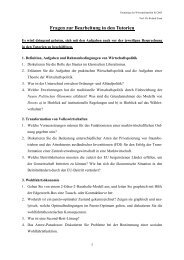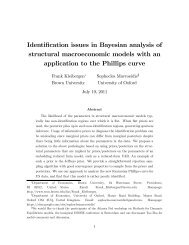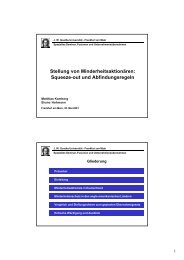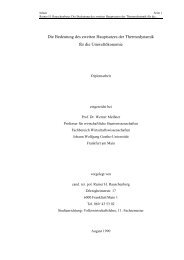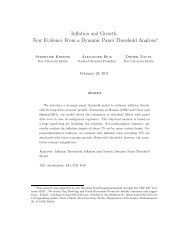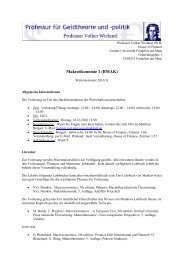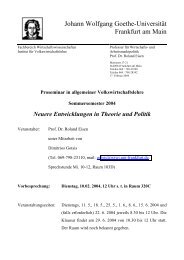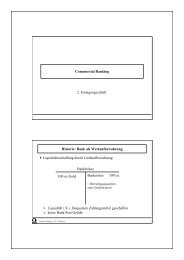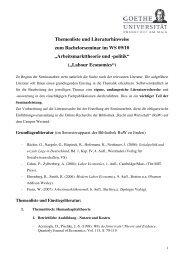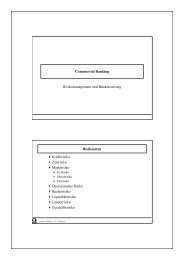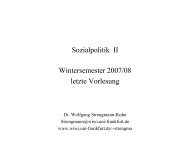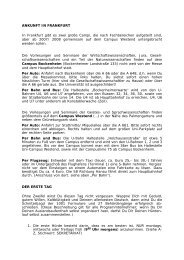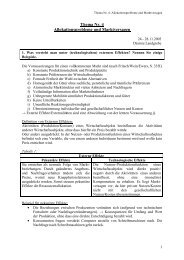Calvo vs. Rotemberg in a Trend Inflation World - Wiwi Uni-Frankfurt
Calvo vs. Rotemberg in a Trend Inflation World - Wiwi Uni-Frankfurt
Calvo vs. Rotemberg in a Trend Inflation World - Wiwi Uni-Frankfurt
Create successful ePaper yourself
Turn your PDF publications into a flip-book with our unique Google optimized e-Paper software.
(e.g., Christiano et al., 2005).<br />
In the <strong>Calvo</strong> price sett<strong>in</strong>g framework, prices are staggered because …rms charg<strong>in</strong>g<br />
prices at di¤erent periods will set di¤erent prices. Then, <strong>in</strong> each given period t, there<br />
will be a distribution of di¤erent prices. Price dispersion results <strong>in</strong> an <strong>in</strong>e¢ ciency loss<br />
<strong>in</strong> aggregate production. Formally:<br />
N d t = Yt<br />
Z 1<br />
At 0<br />
"<br />
Pi;t<br />
di<br />
Pt<br />
| {z }<br />
st<br />
Yt<br />
= st<br />
At<br />
. (4)<br />
Schmitt-Grohé and Uribe (2007) show that st is bounded below at one, so that st<br />
represents the resource costs due to relative price dispersion under the <strong>Calvo</strong> mechanism.<br />
Indeed, the higher st, the more labor N d t is needed to produce a given level of output.<br />
Note that price dispersion creates a wedge between aggregate output and aggregate<br />
employment. To close the model, the aggregate resource constra<strong>in</strong>t is simply given by:<br />
The <strong>Rotemberg</strong> model<br />
Yt = Ct: (5)<br />
The <strong>Rotemberg</strong> model assumes that a monopolistic …rm faces a quadratic cost of<br />
adjust<strong>in</strong>g nom<strong>in</strong>al prices, that can be measured <strong>in</strong> terms of the …nal-good and given by:<br />
' p<br />
2<br />
Pi;t<br />
t 1 ( ) 1 Pi;t 1<br />
1<br />
! 2<br />
Yt; (6)<br />
where ' p > 0 determ<strong>in</strong>es the degree of nom<strong>in</strong>al price rigidity. As stressed <strong>in</strong> <strong>Rotemberg</strong><br />
(1982), the adjustment cost seeks to account for the negative e¤ects of price changes<br />
on the customer-…rm relationship. These negative e¤ects <strong>in</strong>crease <strong>in</strong> magnitude with<br />
the size of the price change and with the overall scale of economic activity, Yt. As<br />
for the <strong>Calvo</strong> model, (6) <strong>in</strong>cludes a general speci…cation for the adjustment cost used<br />
by, e.g., Ireland (2007), among others. In particular, the adjustment cost will depend<br />
on the ratio between the new reset price and the one set dur<strong>in</strong>g the previous period,<br />
8



